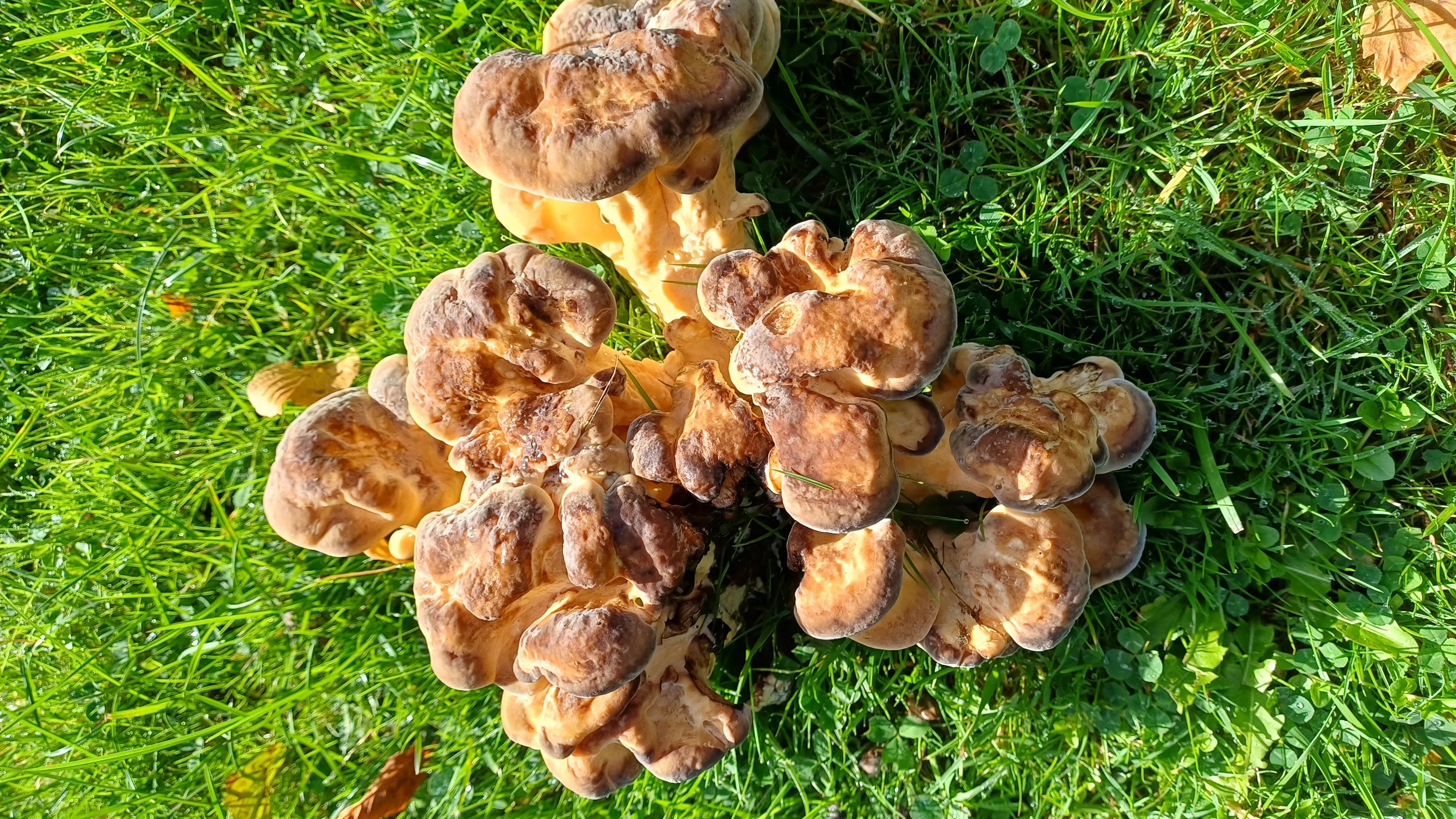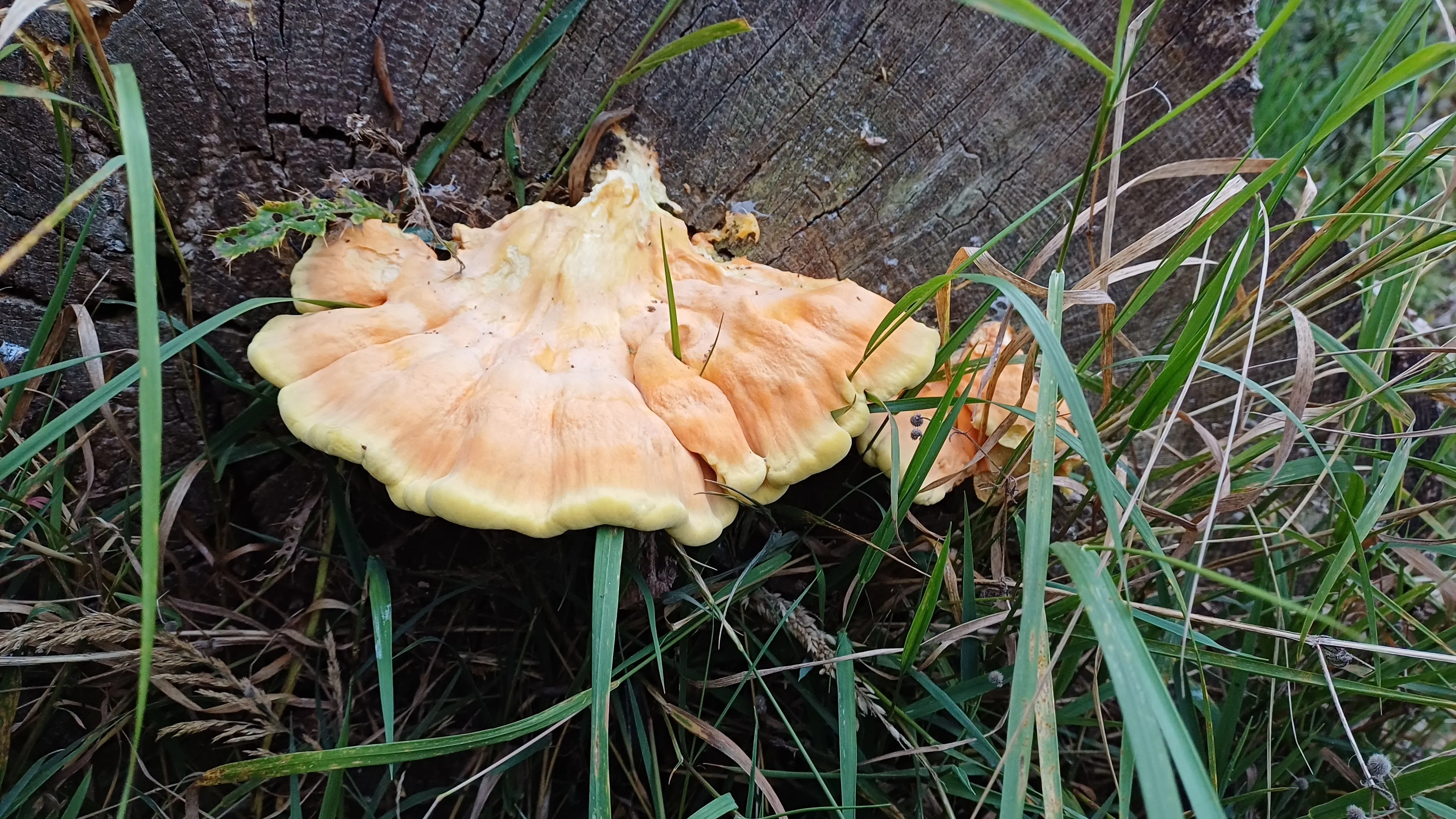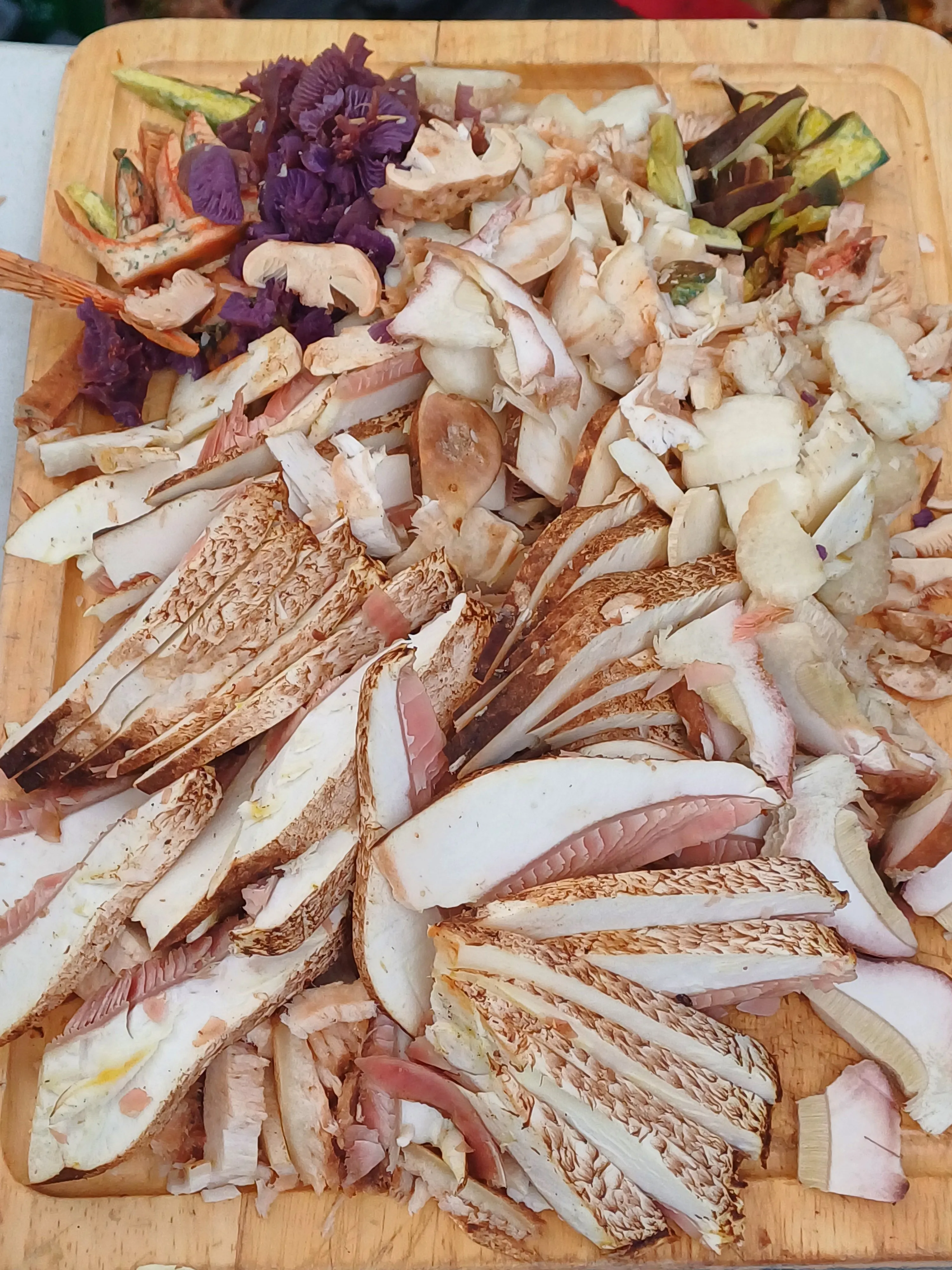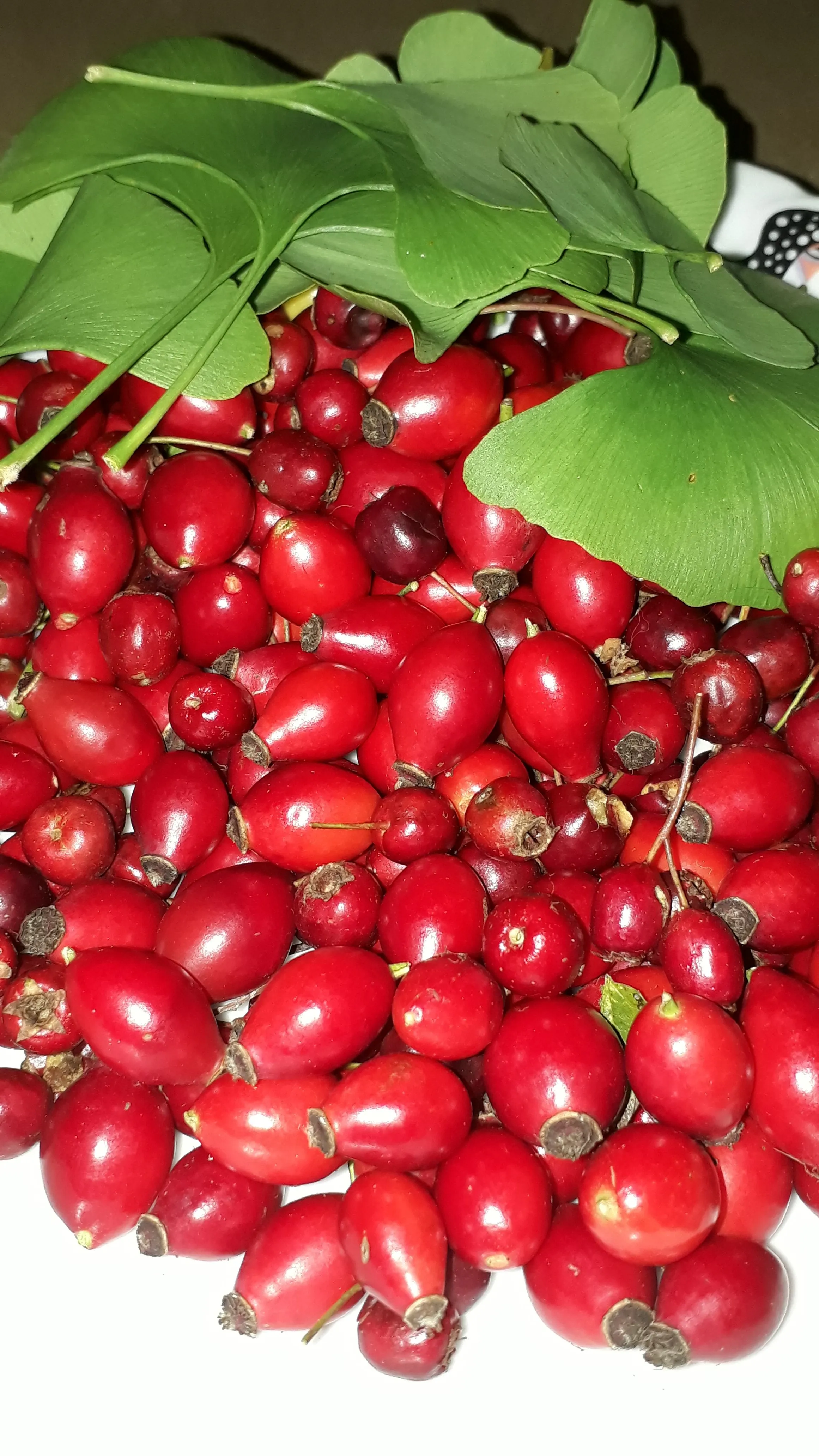Exploring Birch Polypore, Fig Leaf Tea, and More...
🍄 This year, I didn’t have much luck finding mushrooms in my area. The usual suspects were scarce, with only a few penny buns, blackening polypore, and chicken of the woods making an appearance. I’m hoping this will improve as the season progresses. In the meantime, I discovered huge amounts of birch polypore, which finally gave me a chance to delve into it. But remember, we shouldn’t take more from nature than we need. It was a lovely reminder of what I had wanted to explore more.😊
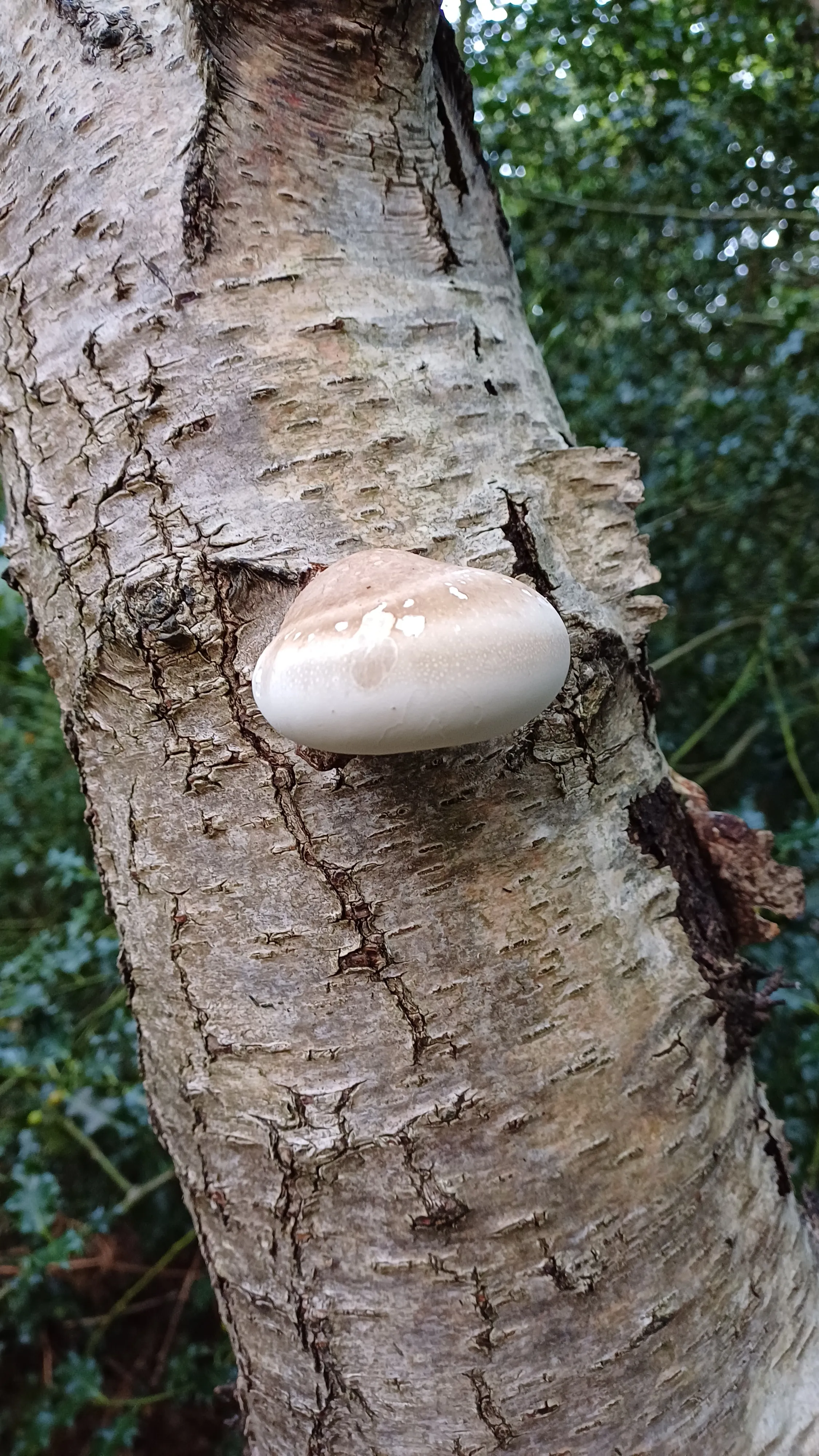
According to Wild Food UK, the birch polypore is truly the Swiss Army knife of fungi. It's been used by humans for thousands of years for practical and medicinal purposes. It has antibiotic and anti-inflammatory properties and has even been used as an antiseptic to clean wounds and promote healing. 🩹✨


Current research is exploring its potential to fight cancer and viruses. Incredibly, it’s also thought to have been used in the Bronze Age to rid the body of parasitic worms! 🐛🔥 For fire enthusiasts, it’s great for tinder too. 😉
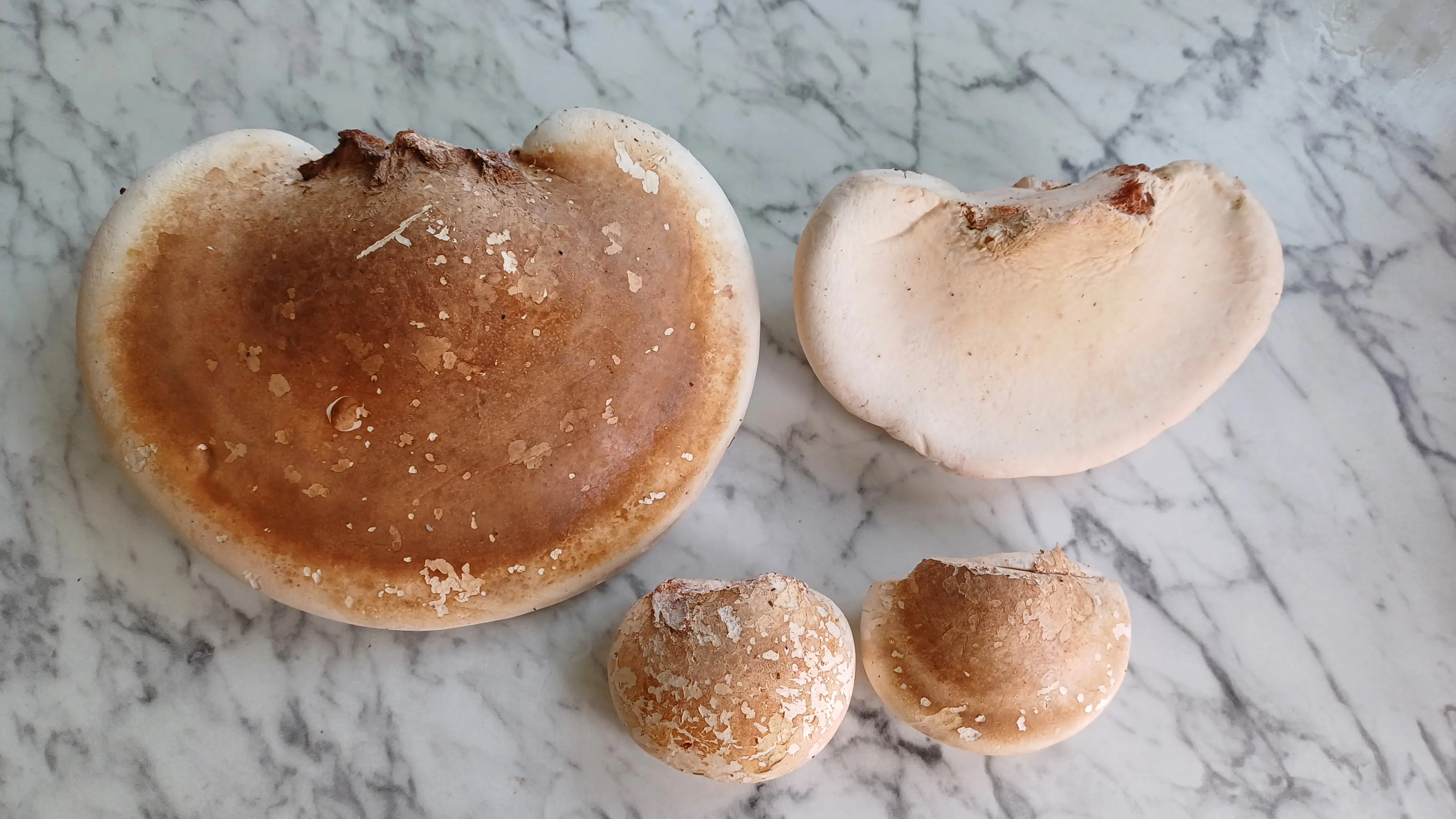
What’s more, it’s been used to sharpen blades and as ink blotters. Oh, and it can act as a self-adhesive plaster too - you can wrap it around a wound, and it’ll stick to itself, just like an Elastoplast. 🩺 Confirmed: it works! 👌
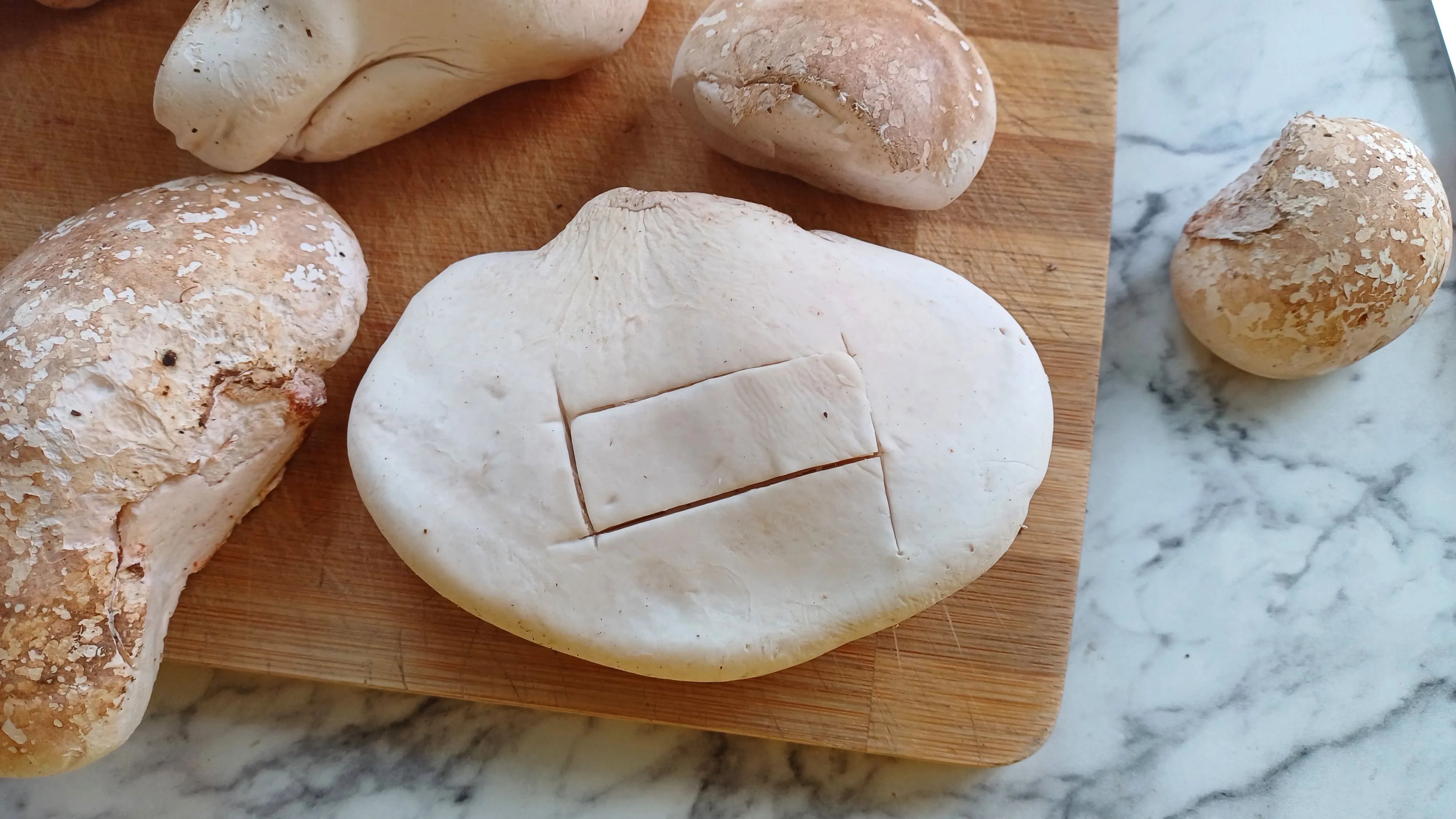
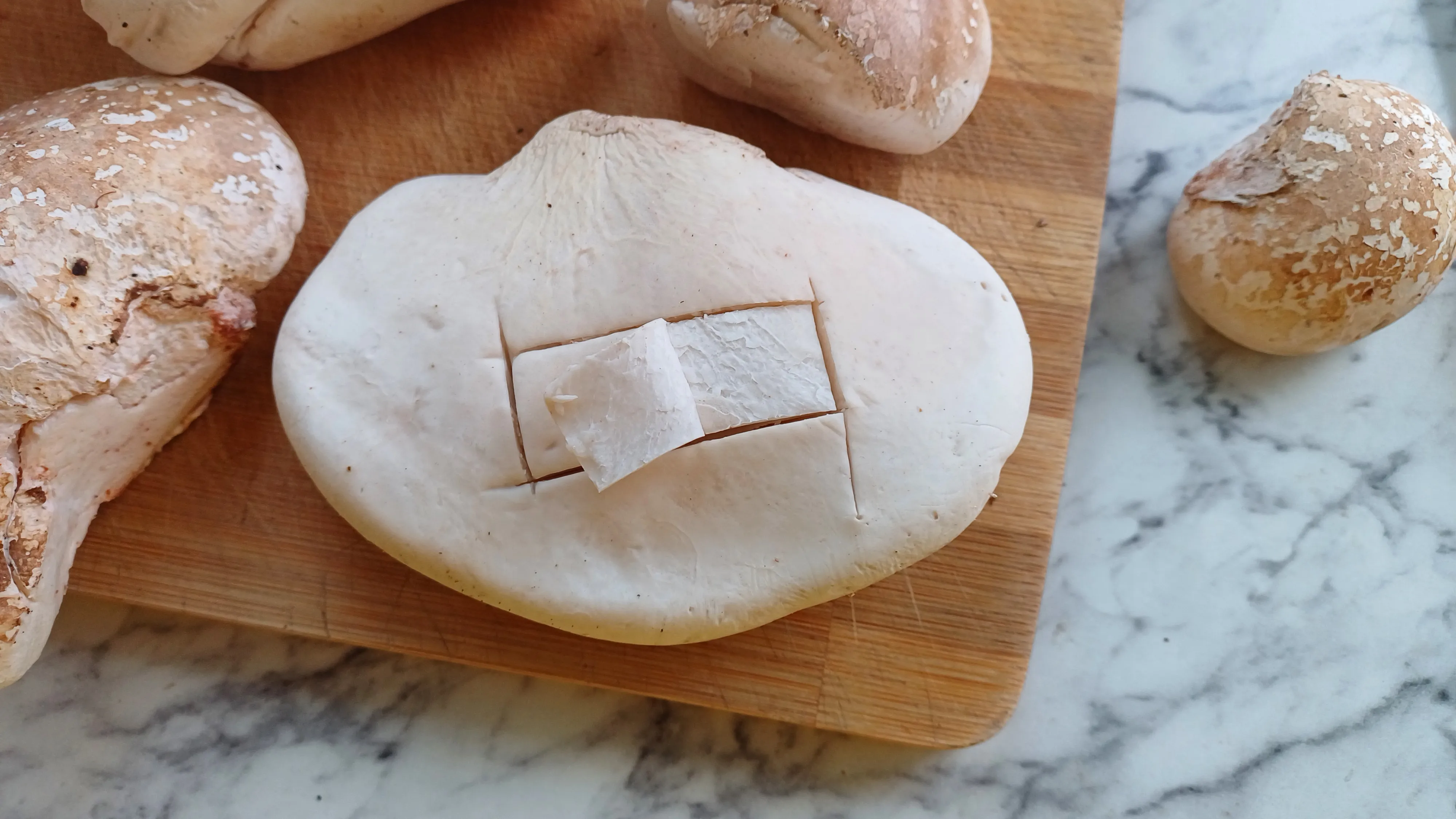
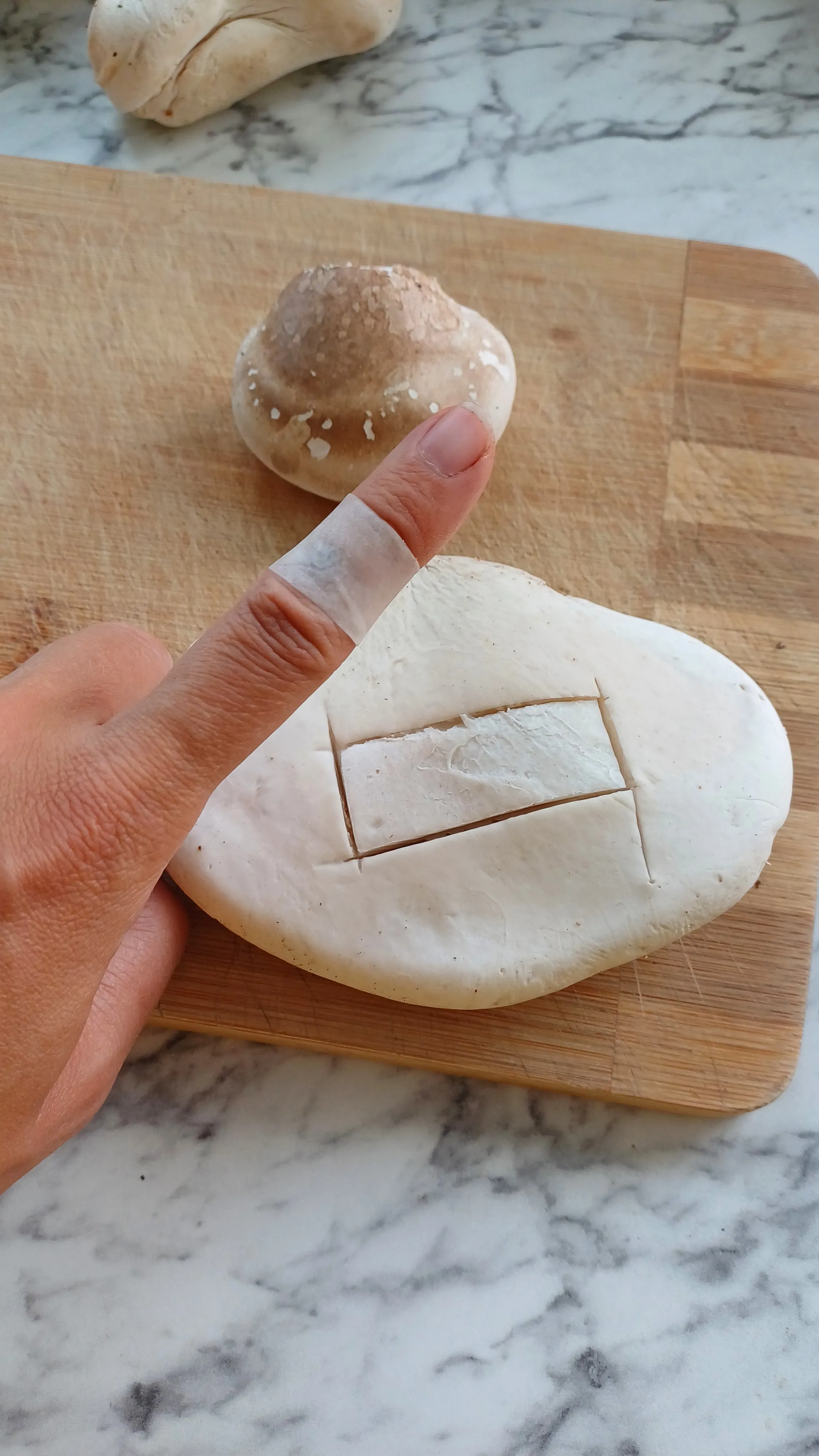

It's too bitter to be considered a good edible, but people make teas and tinctures out of it. I dried some to make tea later in the season. Check it out further if you're interested! 🍵📖
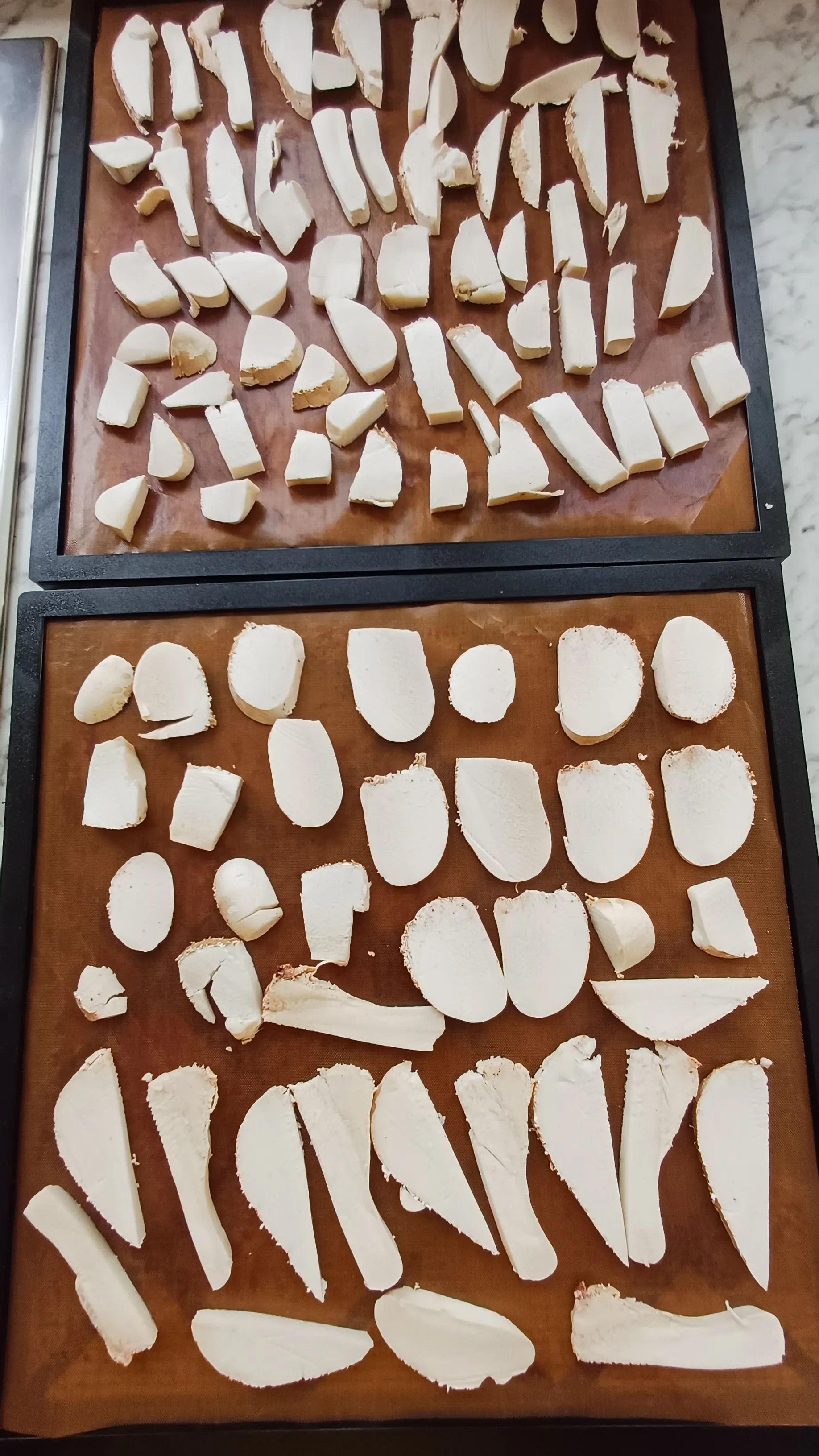
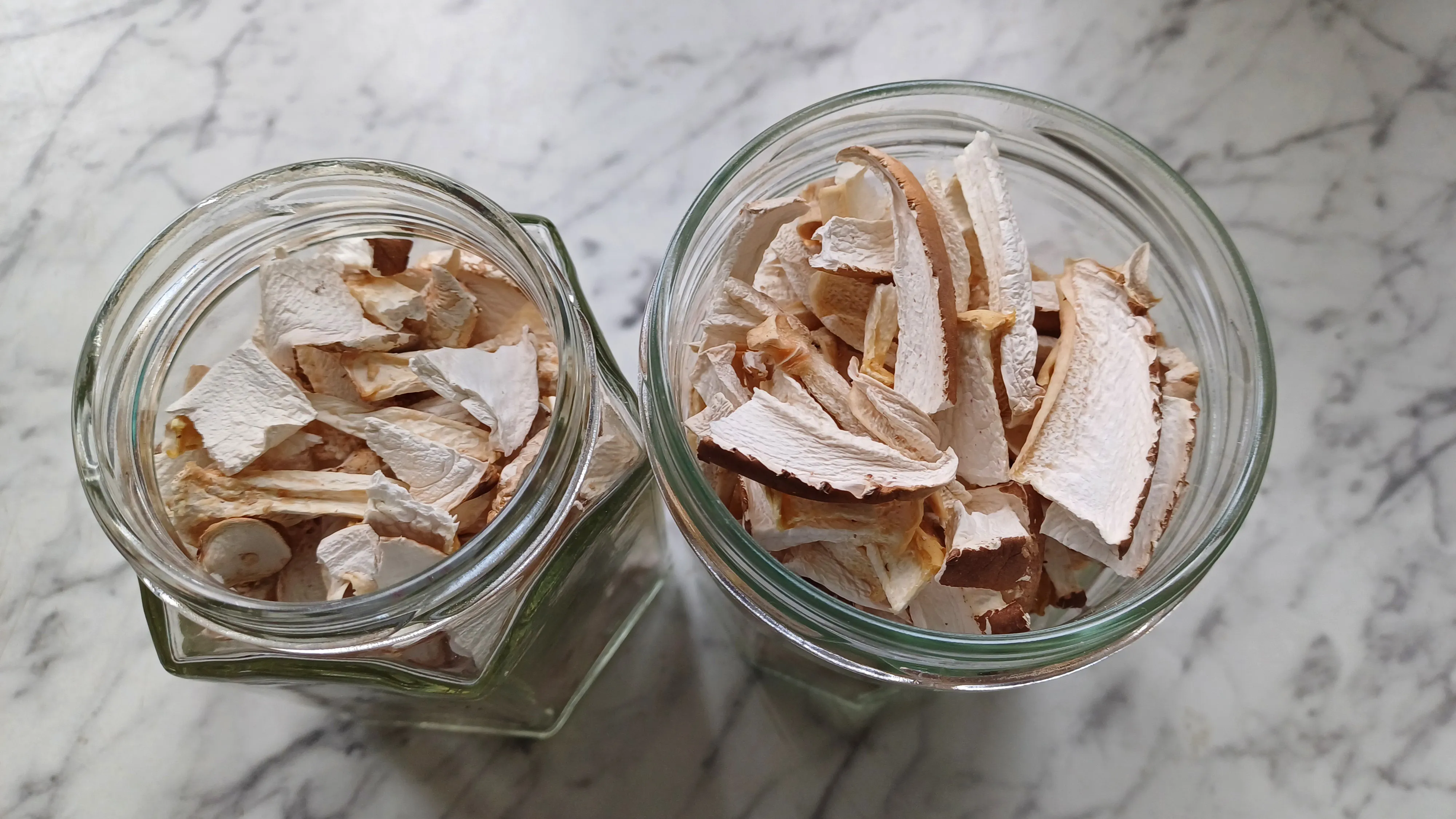
🍄 I stumbled upon some sadly withered orange peel fungus, likely nibbled on by slugs. At first, we thought it was just discarded orange peel, but to our surprise, it turned out to be a mushroom! We couldn’t help but laugh when we found actual orange peel just moments later.

🍊 Orange peel fungus, known scientifically as Aleuria aurantia, is a very unusual, completely unmistakable, and edible mushroom. Its vibrant colour and cup-like shape make it a delightful find, even if this particular specimen was past its prime!
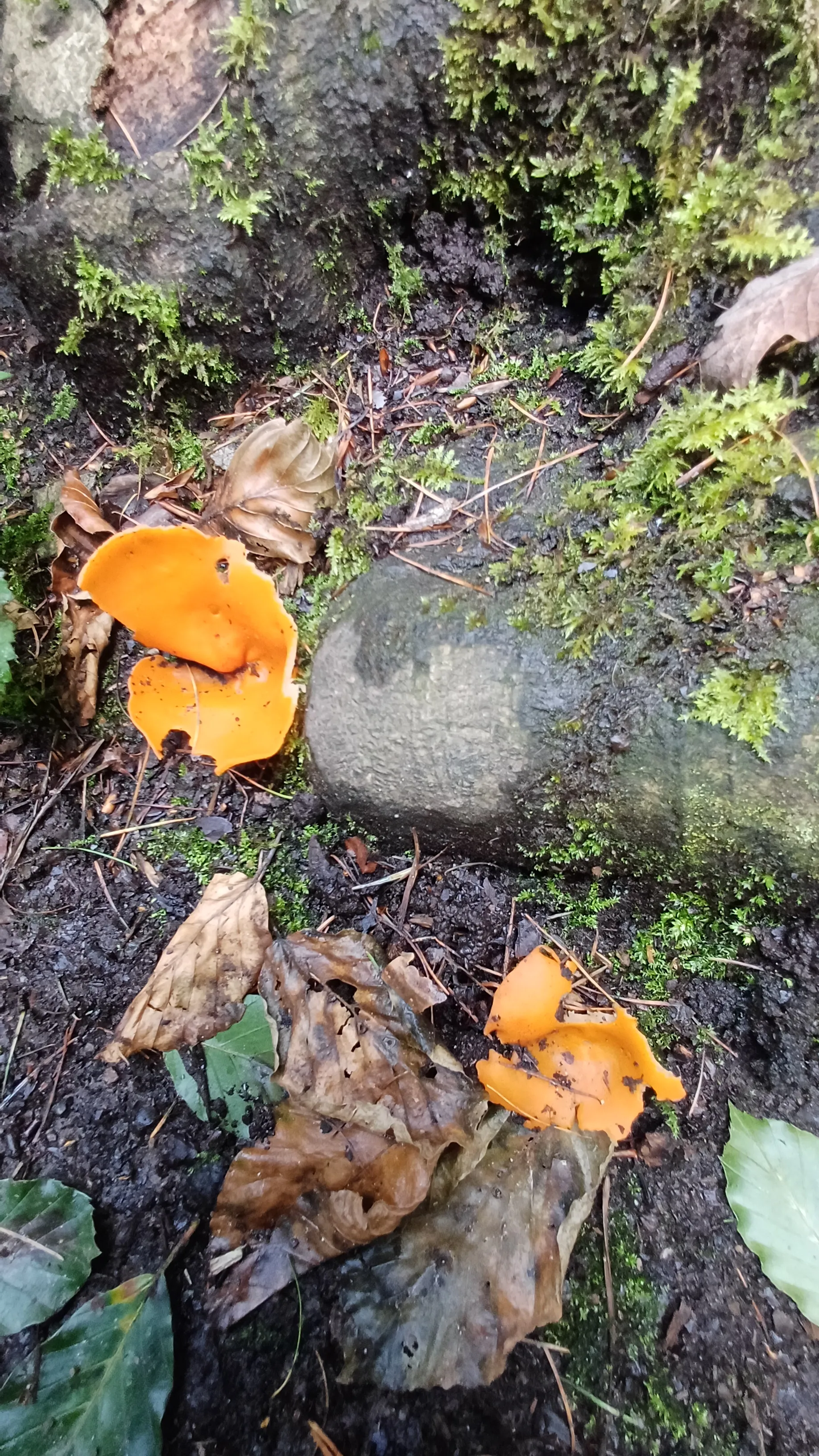
🍃 This is not completely wild, but I recently came across someone who owns a fig tree. With little hope left for those lovely figs to ripen in British weather, it got me thinking, why not utilise the leaves instead?

💡 We got some great advice from the fig tree owner afterwards: you can strip half of the figs around August so the tree can concentrate its energy on ripening a smaller amount of figs. Let’s try this next year, as it’s too late for this season! 🍂🍇

🍃 Fig leaves are rich in benefits; they can aid digestion, lower blood sugar levels, and even improve heart health. 💚 Drinking fig leaf tea can support your digestion and may even enhance heart health. These leaves contain antioxidants and anti-inflammatory properties, making them a powerful ally for a healthy lifestyle. You can enjoy them as a tea, infuse them in blends, or use them in cooking as wraps for delicate dishes.
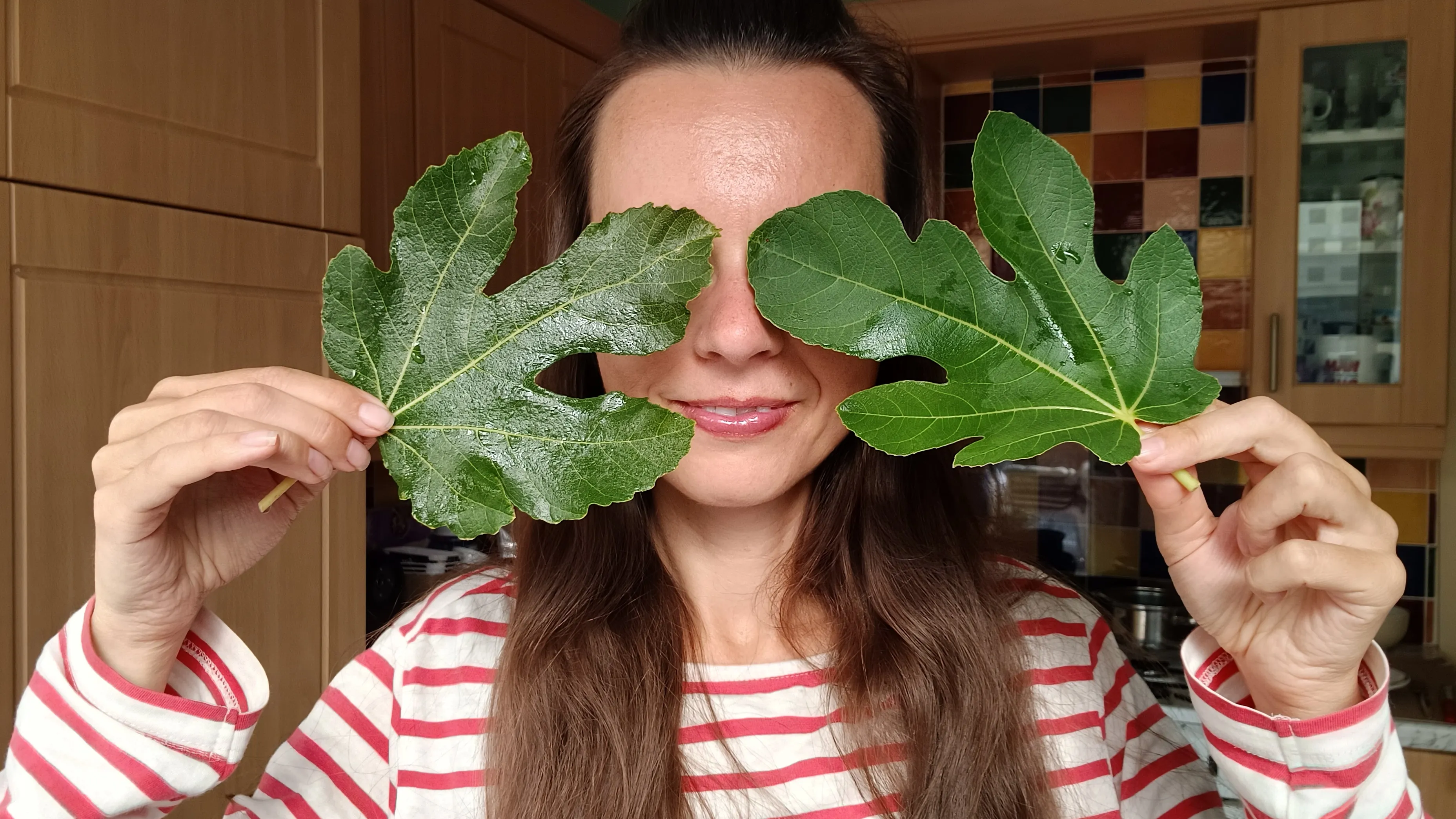
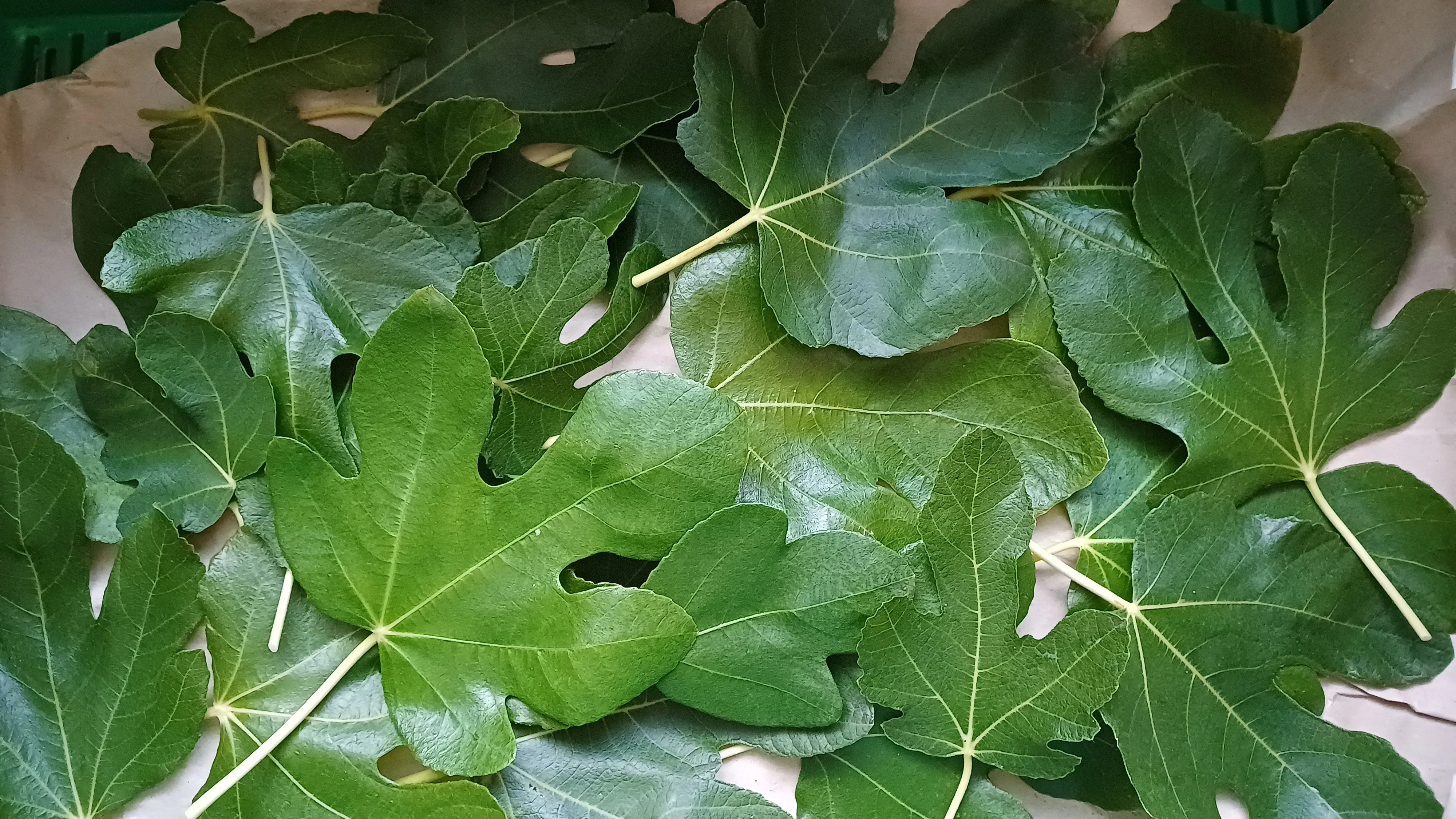
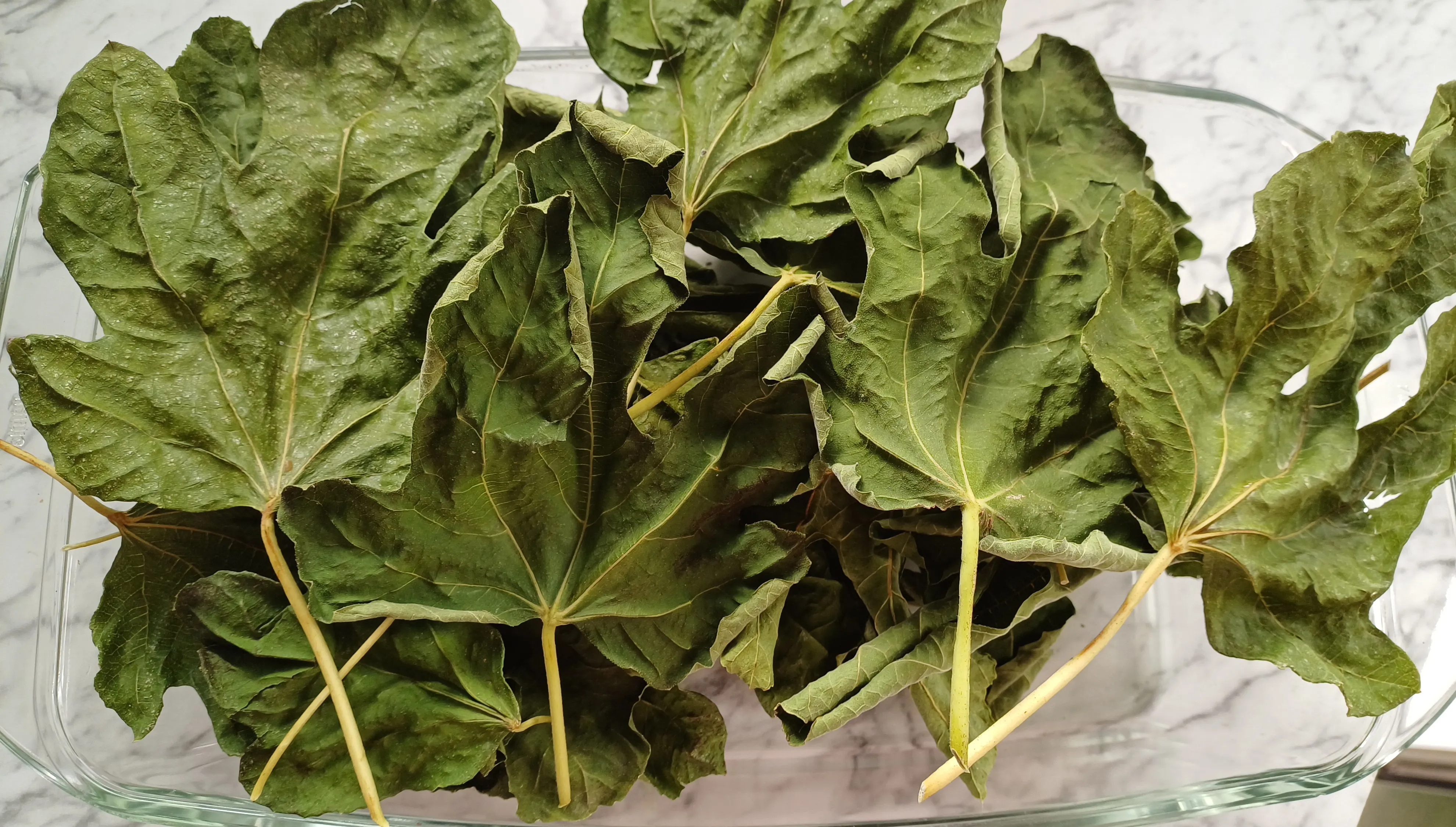
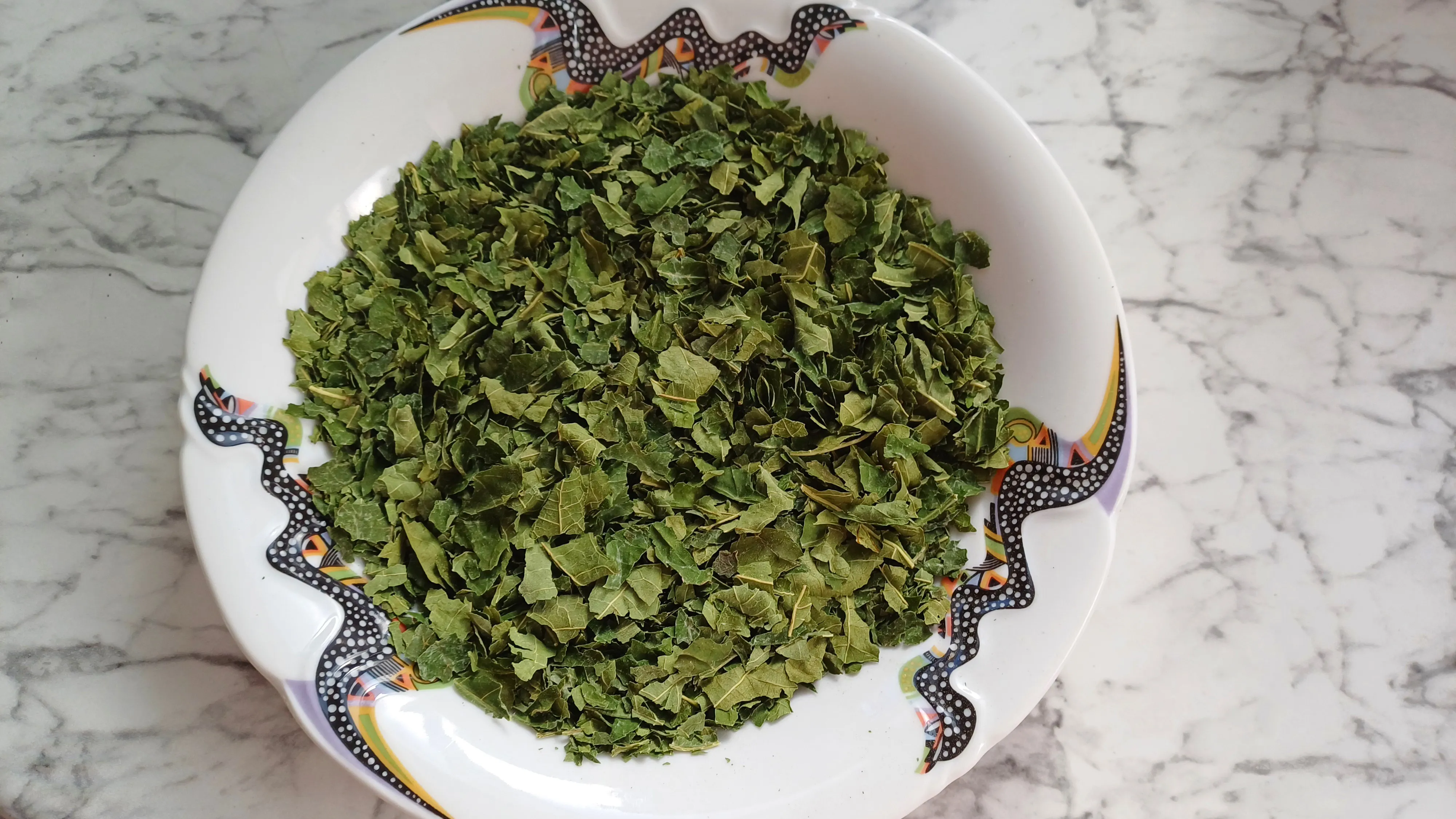
🍃 Fig leaves are packed with surprising benefits, making them a fantastic addition to your tea cupboard. Not only do they offer a unique flavour, but you’ll also notice a delightful aroma with a hint of coconut as it brews. This gentle fragrance creates a refreshing and enjoyable experience. 🙏
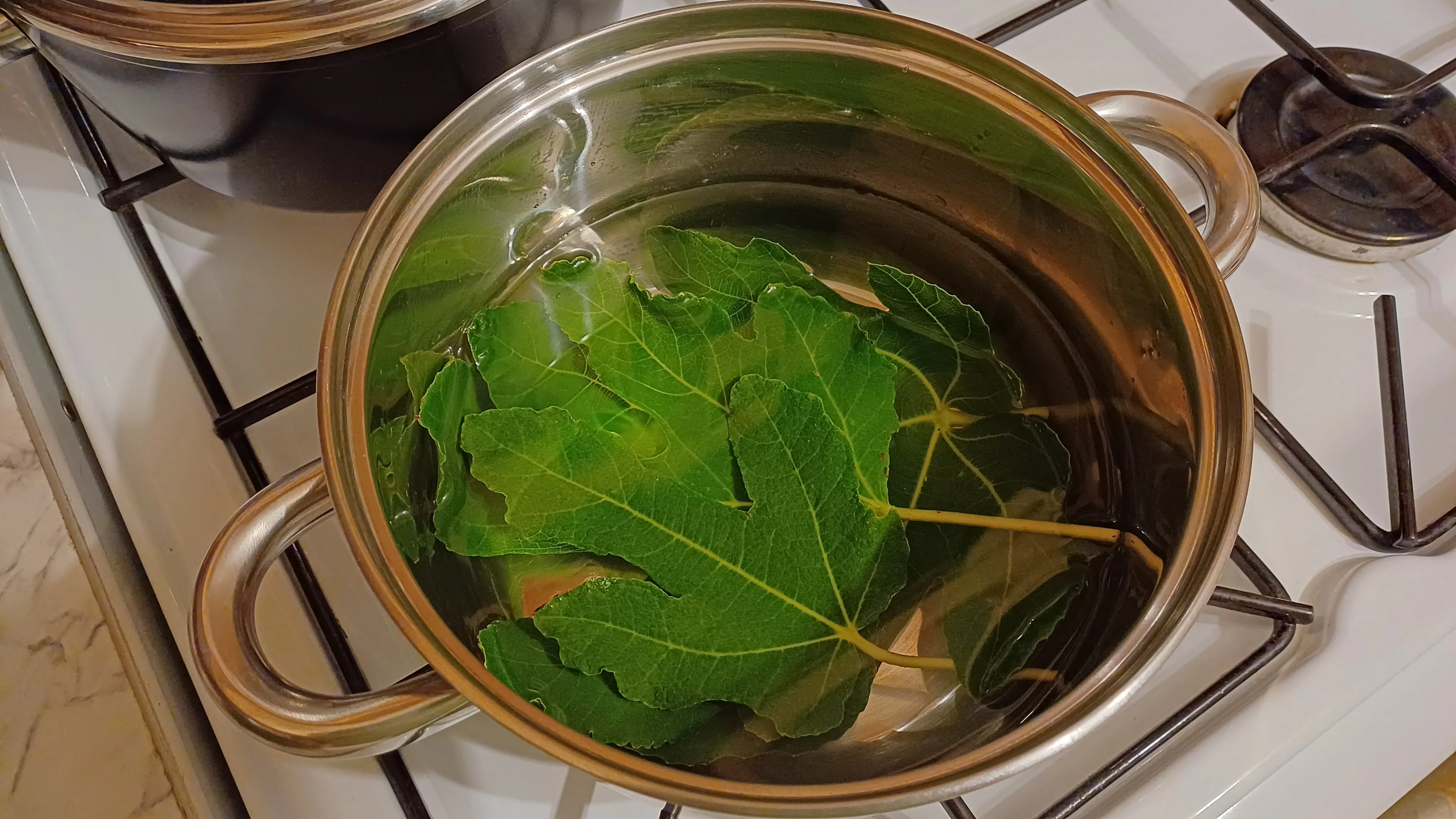
☕ If you’re new to fig leaf tea, its flavour is mild and slightly nutty. On its own, it’s light and pleasant, but it really shines when blended with other herbal teas. Why not experiment with combinations like chamomile, mint, or even a touch of honey to enhance its delicate taste?
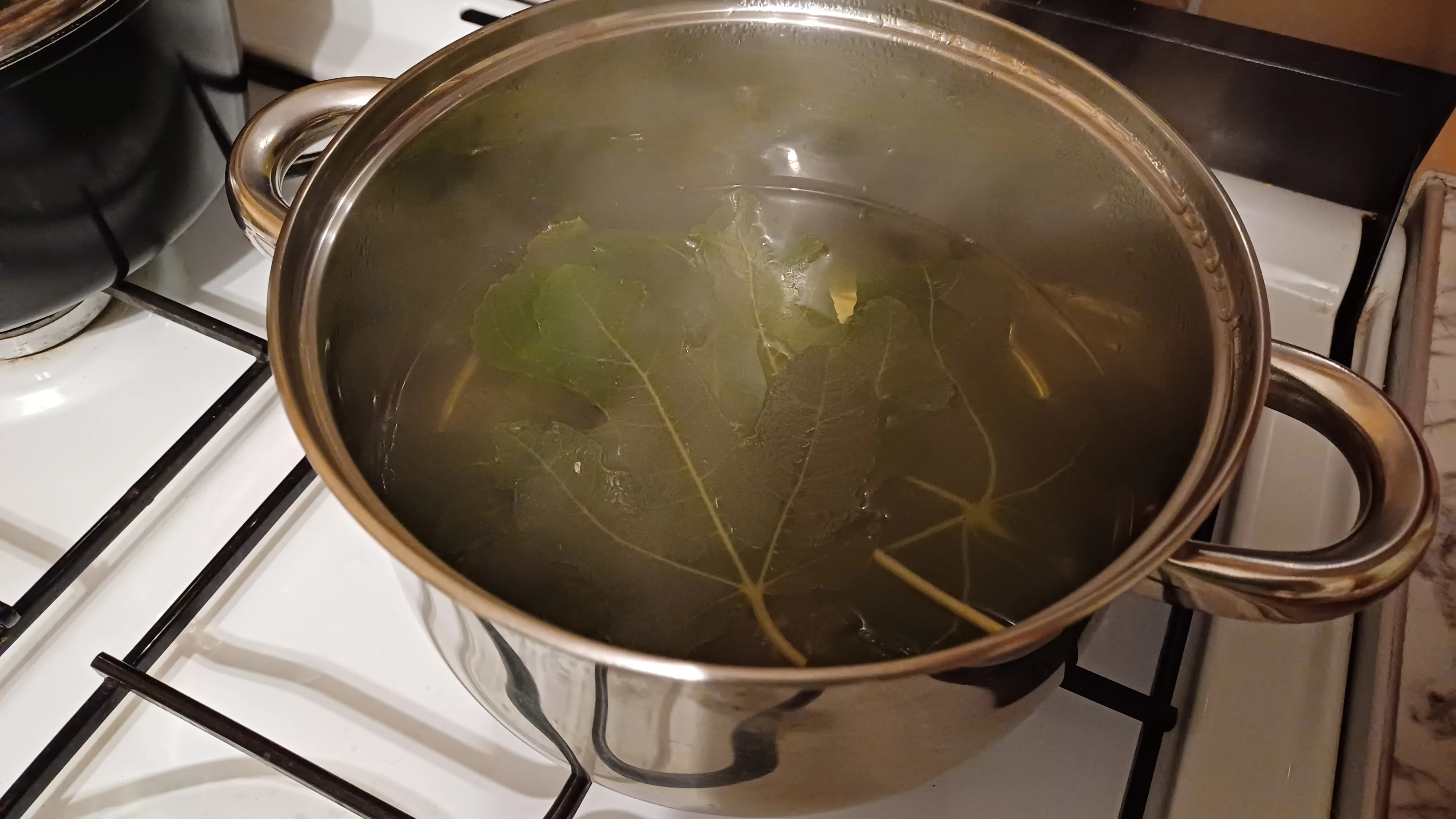
☕ Today, I finally made my first fig leaf cuppa! While it’s lovely on its own, I think it would be even better in a blend. Who knew those overlooked leaves could be so beneficial and carry such a delightful coconut-like aroma? Give it a try - you might be surprised at how refreshing and soothing it can be! 🤷♀️

🥰 One day I’ll have my own fig tree! This is a public announcement, so you can remind me later. Haha! 😂
🌲 This year, I ventured into making mugolio for the first time, and I decided to put a unique spin on it. While the classic mugolio is crafted from the young green cones of Swiss pine (Pinus cembra), I stumbled upon some green cedar cones and thought, “Why not give this a go?” 🍯✨
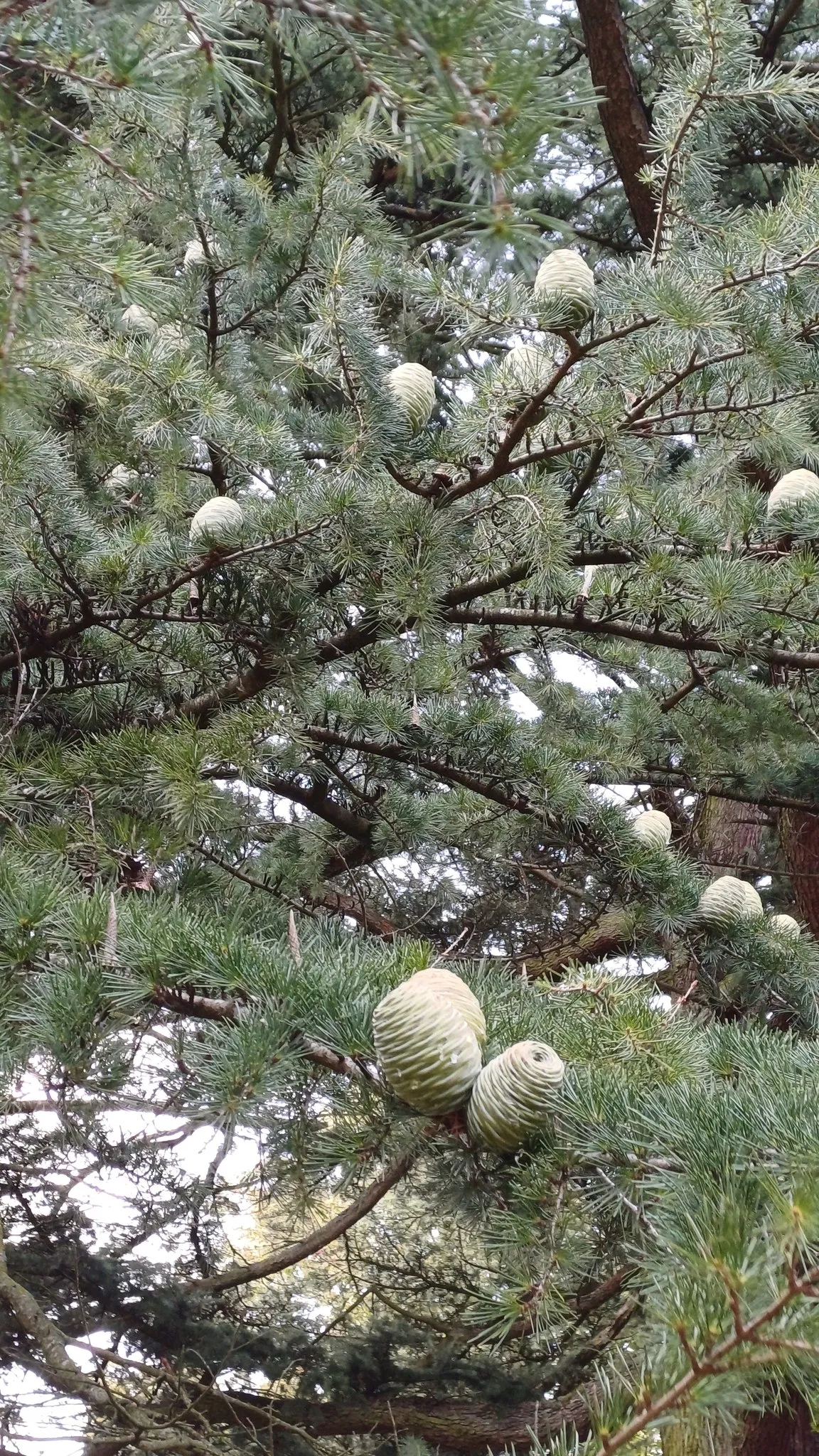
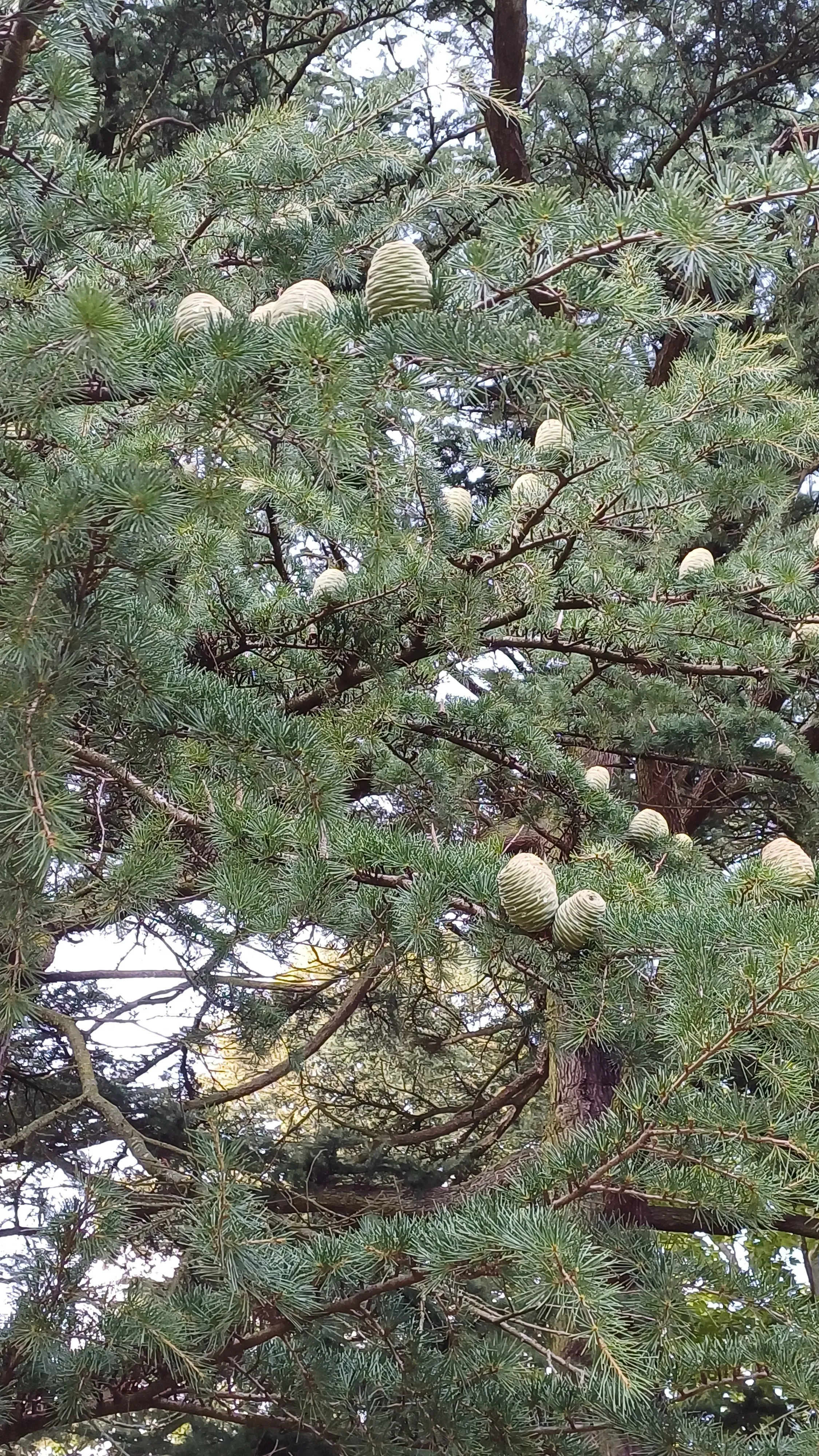
Mugolio is a sweet syrup akin to maple syrup and is typically made from pine cones or buds. 🌟 Traditionally, it uses the young cones of the mugo pine, a low-growing tree from the Italian Dolomites. However, you can also use cones from other conifers like white pine, red pine, balsam fir, and even pine buds collected in spring when they’re open and full of pollen.
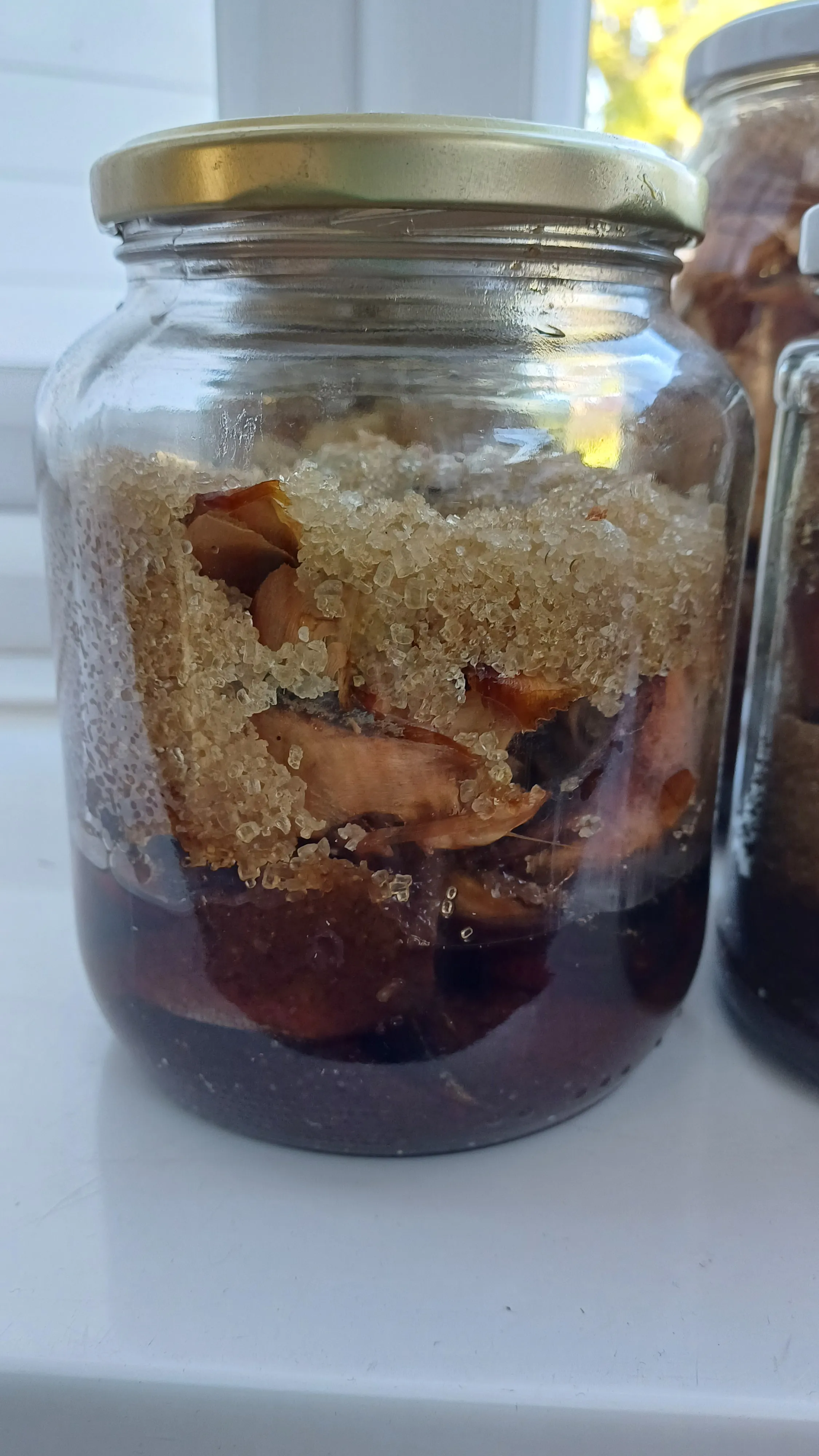
Here’s a simple guide to making mugolio:
1. Gather your green cones or buds during spring or summer while they’re still green and tender.
2. Combine them with an equal amount of sugar in a jar.
3. Shake the jar and let the mixture ferment.
4. After fermentation, strain the mixture and cook the sap over low heat with additional sugar until it thickens and turns dark brown. 🍯✨
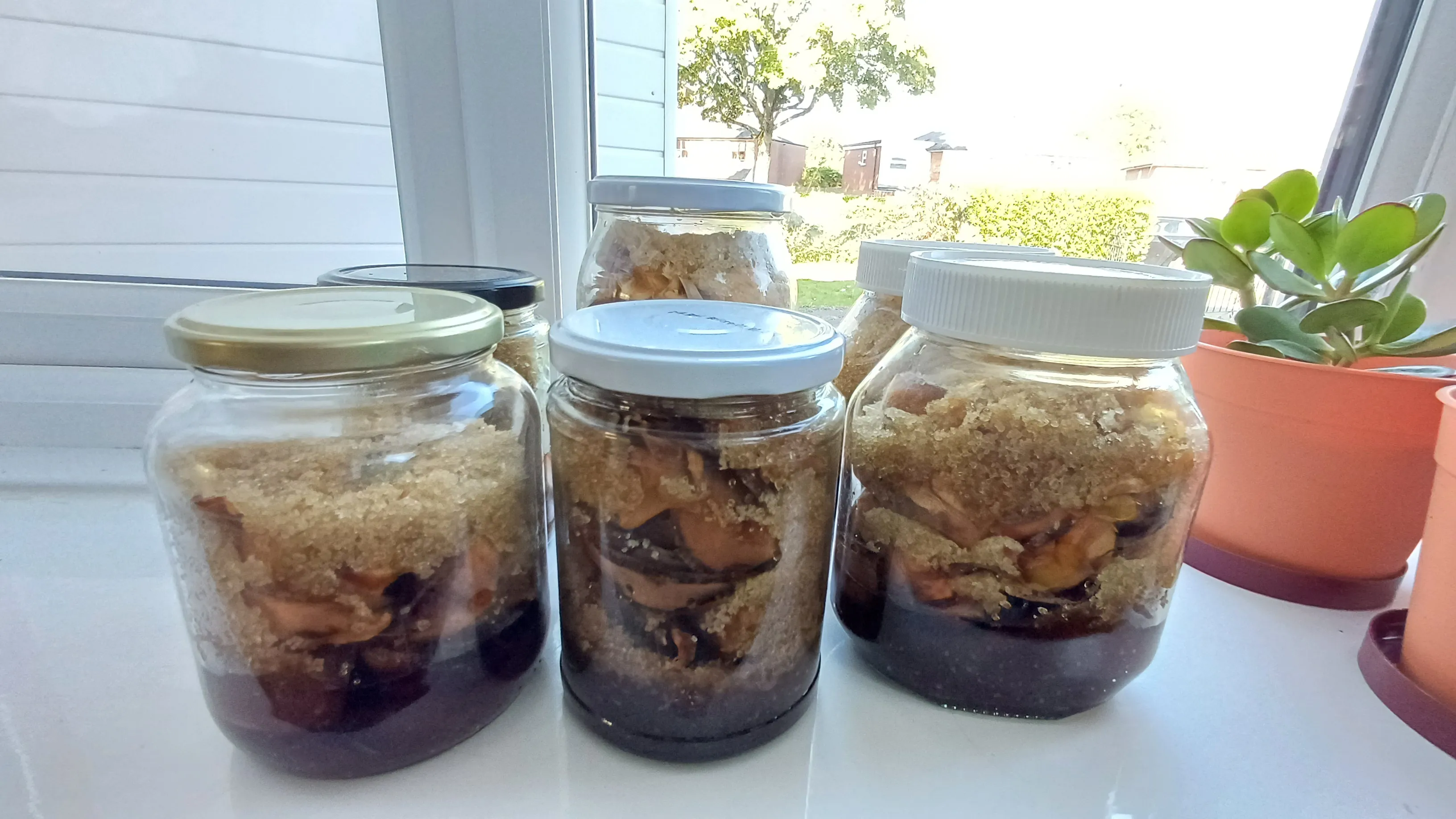
Mugolio can enhance various dishes, from marinades and pancakes to ice cream sorbet, and it can be stored for up to three years. 🎁
Though my cedar cone mugolio might not follow the traditional method, I’m eager to see the results of this experiment. Sometimes, a bit of creativity leads to wonderful surprises. Stay tuned to discover how this unique syrup turns out! 🌟
🍯✨ Inspired by River Cottage Handbook No. 18, I’m going to try making fermented rosehip jam with honey! 💫 I’m excited to see how this turns out!
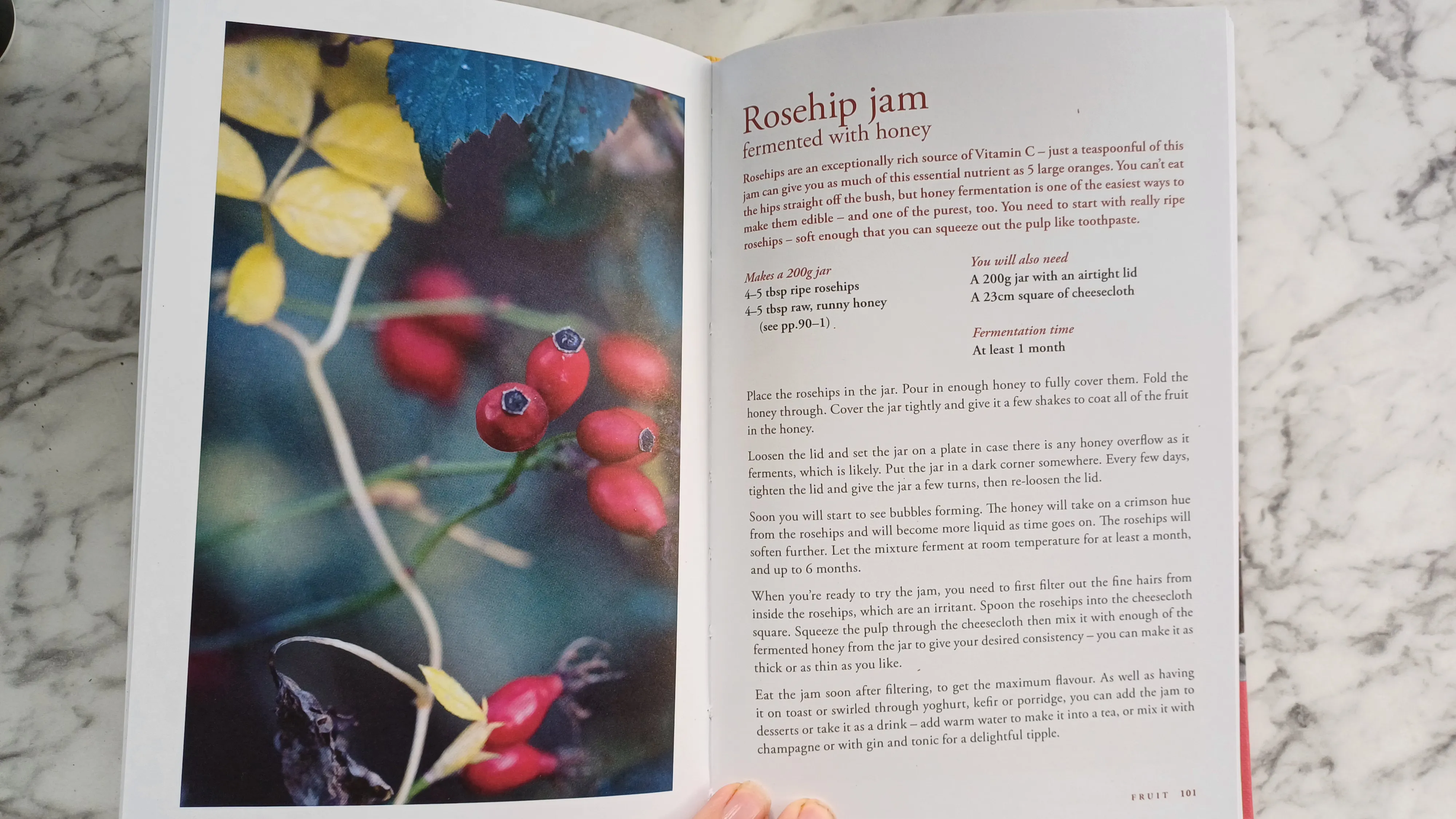

🍇 Over the summer, I made summer pudding jam with blackcurrants and redcurrants from my garden, and I also gave it a go with blackberries. The colour was stunning! 🌈 With softer berries, the fermentation process was much quicker (3-7 days).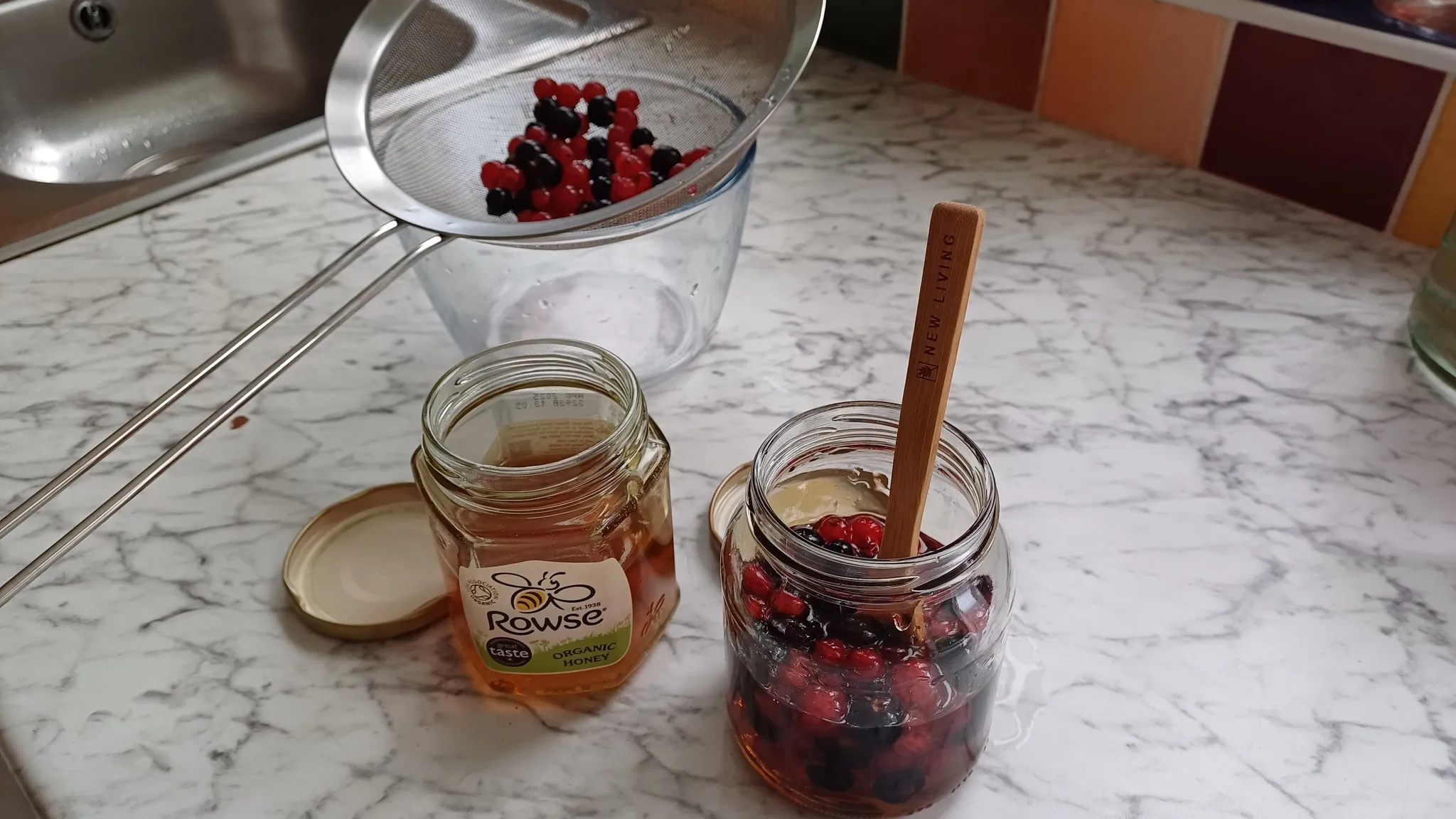
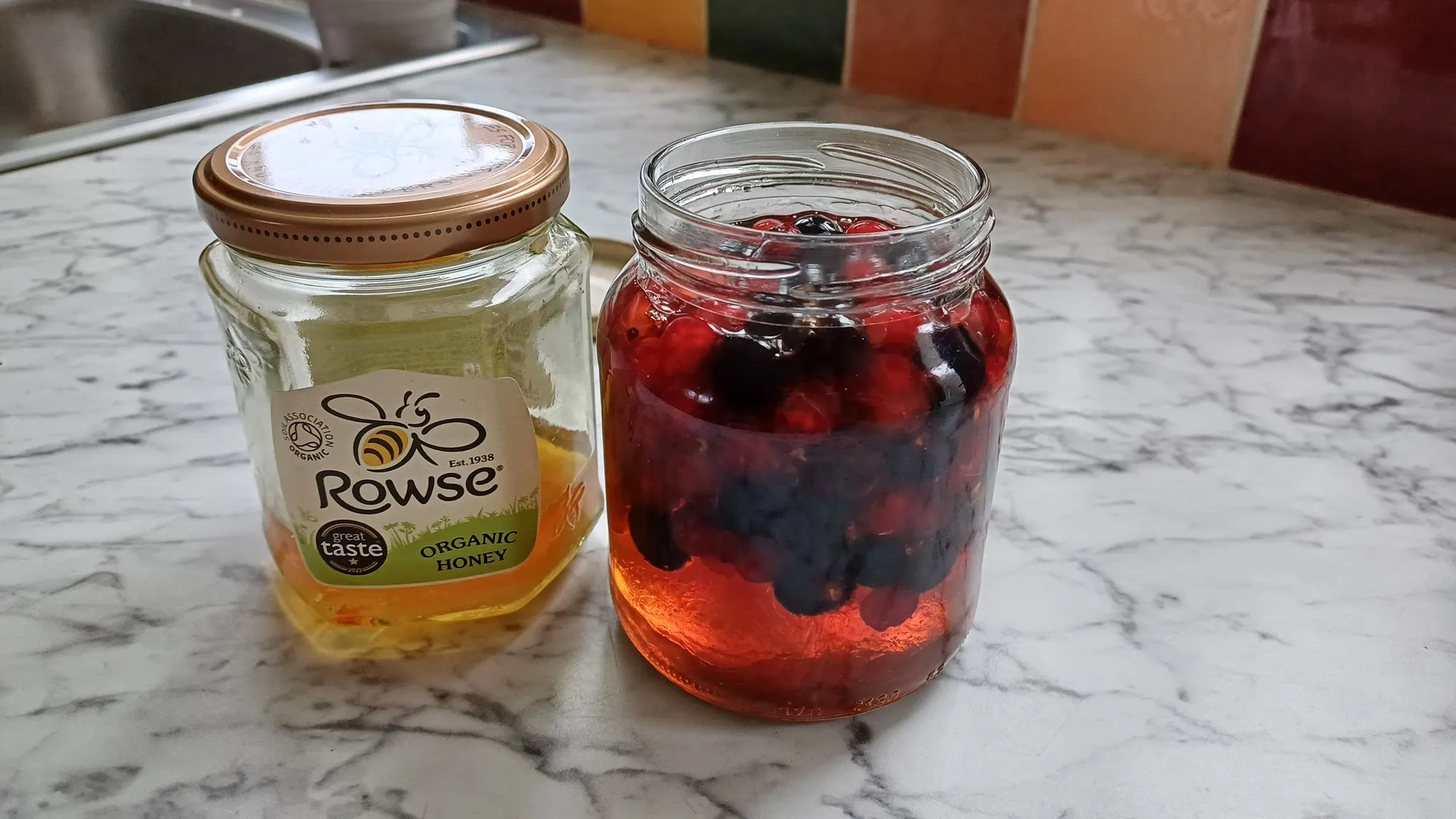
🌹 For the rosehip jam, the process will be longer at least one month. I rarely follow recipes to the letter, so it’s basically half honey and half fruit of your choice.
🫙 Makes a 200g jar:
🥄 4-5 tbsp very ripe rosehips
🍯 4-5 tbsp raw, runny honey
⏳ Fermentation time: at least one month, but up to 6 months
🌀 Instructions:
1️⃣ Mix the rosehips and honey in equal parts.
2️⃣ Loosen the jar lid slightly and set the jar on a plate to catch any honey overflow as it ferments.
3️⃣ Place the jar in a dark corner.
4️⃣ Every few days, tighten the lid, give the jar a few turns, and then re-loosen the lid.
5️⃣ Soon, you’ll start to see bubbles forming, and the honey will take on a crimson hue as the rosehips soften.
6️⃣ After fermenting, filter out the fine hairs from the rosehips with cheesecloth to avoid irritation.
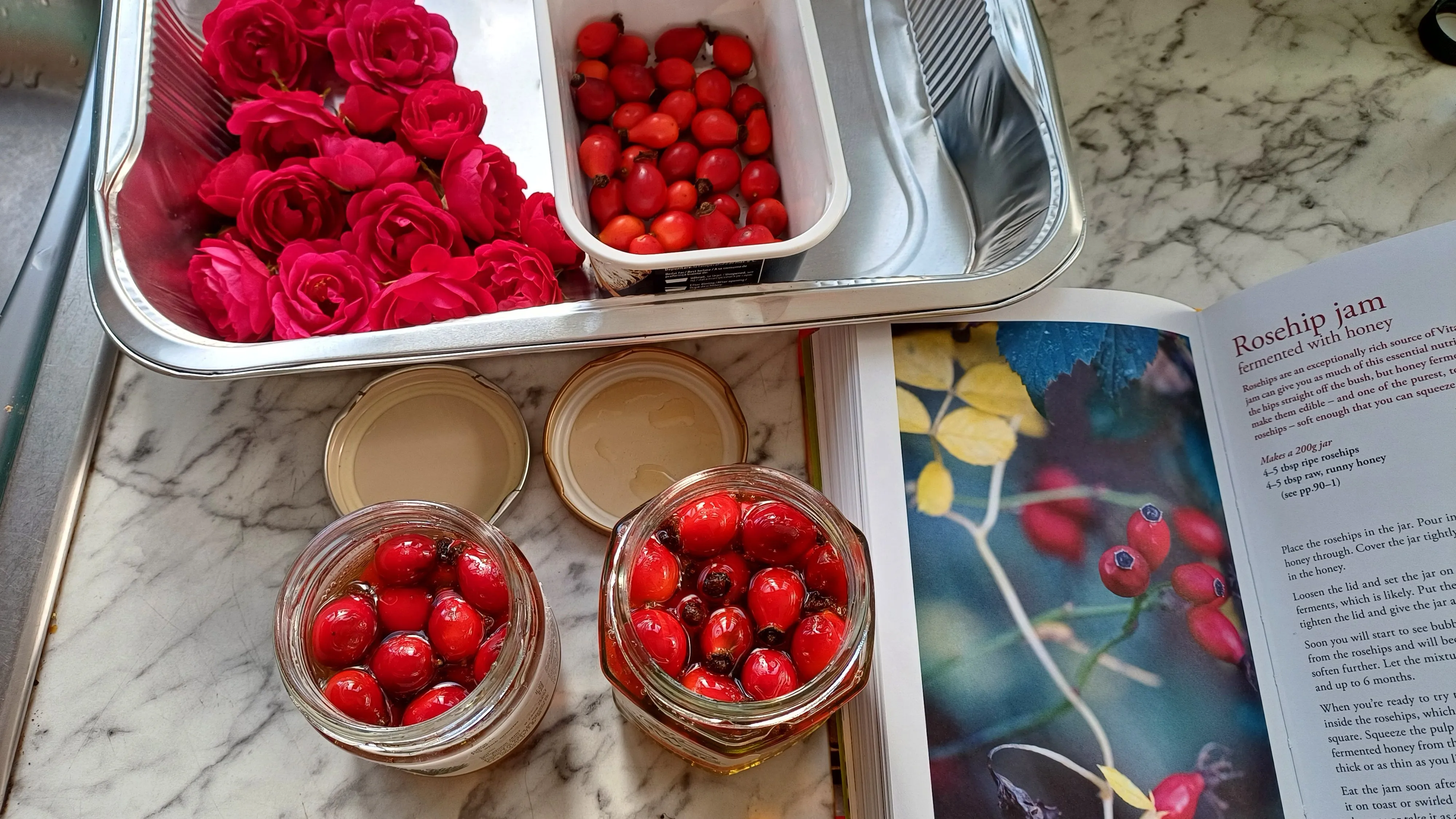
🍞 Enjoy on toast, swirl it through yoghurt, kefir, or porridge, or add it to desserts. You can also mix it with warm water for a tea or pair it with champagne or gin for a cheeky drink! 🥂
🌟 Well, that’s a wrap on my foraging and culinary escapades for this season! From the hilariously mistaken orange peel fungus to discovering the versatile birch polypore (who knew it could double as a self-adhesive plaster? 😆), it’s been a season full of surprises. I even ventured into the world of mugolio with cedar cones, creating a sweet syrup that's bound to be a unique addition to my pantry. And let’s not forget the fig leaf tea – a delightful new addition to my tea cupboard with its subtle coconut aroma. 🍄🍯🍃
🍂 I’m also excited about my upcoming experiment with fermented rosehip jam, inspired by the River Cottage Handbook No. 18. It’s another adventure in flavour that I can’t wait to dive into! 🌹
🥳 While the British weather wasn’t too kind to our figs this year and the mushrooms were playing hard to get, these quirky discoveries have made the journey all the more enjoyable. Sometimes, a little bit of creativity and a touch of humour can turn even the smallest finds into memorable experiences.

🥰 I hope you enjoyed this peek into my seasonal adventures and maybe even found a bit of inspiration for your own foraging and kitchen experiments.
💚 Happy creating and exploring! 💚
From my heart ❤️ to your heart.❤️


